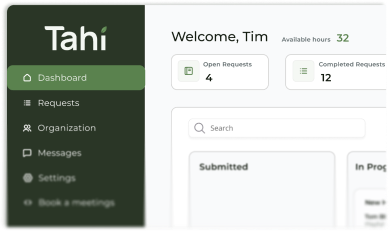SEO & Analytics
From silos to seamless: an integrated approach
Discover how integrating design and development leads to faster project delivery, fewer errors, and a genuinely better final product.

The problem with the old way
For years, the standard approach in web projects was to keep designers and developers in separate boxes. The designers would create a beautiful concept, polish it until it shone, and then throw it over the wall to the developers to build. On paper, it seems logical. In reality, it's a recipe for frustration.
This way of working, known as a siloed workflow, creates a breeding ground for miscommunication and mistakes. Designers might come up with ideas that are technically very difficult or time-consuming to build, but they won't know this until a developer points it out, often late in the game. This leads to a painful cycle of rework, pushing timelines and budgets to their breaking point.
This disconnect doesn't just affect the project team. It impacts the final product. When design and development aren't in sync, the user experience becomes fragmented. The smooth journey you mapped out for your customers can end up feeling clunky and disjointed. It's a process that stifles creativity and leads to a digital presence that fails to reflect the quality of your business.
A better way to build
At Tahi Studio, we build everything on a foundation of partnership, and that starts with our own team. We've seen firsthand the power of bringing design and development together from day one. It's not just a nice idea. The results are measurable and significant.
Research shows that integrated teams can deliver projects up to 25% faster. Think about that, a quarter of the time saved simply by improving collaboration. These teams also see a 30% reduction in critical defects, because potential issues are spotted and solved early on, not patched up at the last minute.
But it's not just about speed and efficiency. The quality of the work improves dramatically. Integrated teams report a 35% increase in customer satisfaction. When collaboration is seamless, the result is a more cohesive, thoughtful, and user-friendly product. While these principles apply across digital projects, their power is also proven in the physical world.
Shared goals are the key
The real strength of an integrated team comes from everyone pulling in the same direction. Instead of designers aiming for visual perfection and developers focusing on clean code, the entire team is focused on a single, shared goal, like increasing user satisfaction or feature adoption. This shared accountability transforms the dynamic from a series of handoffs to a genuine partnership.
This approach is supported by a unified project roadmap. We merge user experience improvements, technical tasks, and business goals into one plan. This means a designer's insights can influence the technical architecture, and a developer's understanding of what's possible can shape the design. It's a constant, collaborative conversation. You can learn more about the importance of cross-functional KPIs to see how this works in practice.
How we make it work
To make this a reality, we rely on a few core principles and rituals. Daily stand-up meetings and joint sprint planning sessions are vital. They ensure everyone has visibility over the entire project and understands how their work impacts everyone else. This is a core part of our commitment to being candid and transparent.
We also use integrated tools to support this collaboration. Platforms like Figma allow for seamless design-to-development handoffs, while centralised documentation hubs like Notion keep everyone on the same page. This is our single source of truth in action, a principle that we apply to our client work through our own dedicated dashboard.
The success of this approach is well-documented. A case study on a streaming service provider showed that by reorganising into product-aligned squads, they cut their time-to-market by 40% and boosted employee satisfaction by 25%. Similarly, a fintech company that built a unified platform for design and development assets saw a 50% drop in handoff issues. For those interested in the metrics behind such success, DORA metrics offer a great framework.
Measuring what matters
To ensure our integrated approach is delivering, we track a few key metrics:
- Process Efficiency: We look at our cycle time, which is the time it takes to get from an idea to a delivered feature. A shorter cycle time means we're working efficiently.
- Quality Outcomes: We track the 'first-time acceptance rate'. This tells us how often a piece of work is approved without needing major revisions, a great indicator of quality.
- Customer Impact: Post-launch, we monitor customer satisfaction scores and the number of reported defects. This tells us if we're truly hitting the mark with users.
- Team Health: We regularly check in on team satisfaction. A happy, collaborative team is a productive team. This is a non-negotiable for us.
Building better, together
Shifting from a siloed approach to an integrated one is about more than just changing a process. It's about changing the culture. It's about fostering a sense of shared ownership and creating an environment where collaboration can flourish.
By unifying goals, embedding collaboration into our daily routines, and using tools that connect us, we can deliver digital experiences that are not only built faster and with higher quality, but that also genuinely serve the needs of your business and your customers. It shows that when you build together, you simply build better.
Ready to experience the power of truly integrated design and development? Explore our partnership approach or start with a free site audit to see how collaborative excellence can transform your digital presence.








